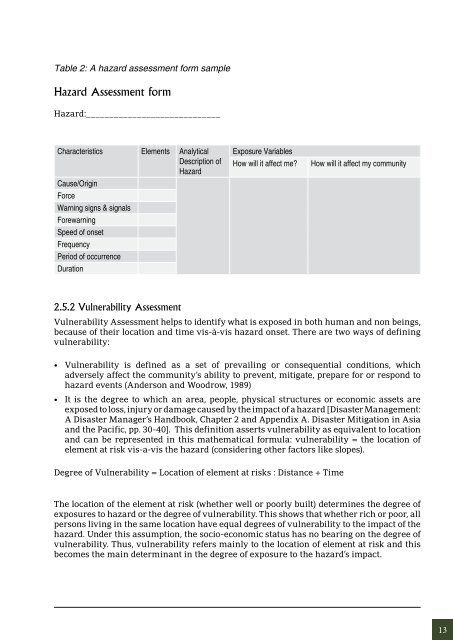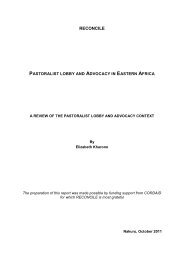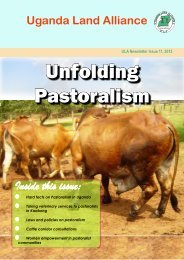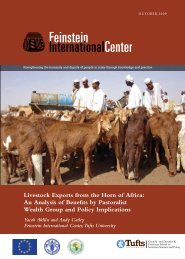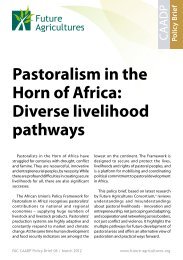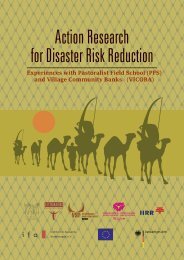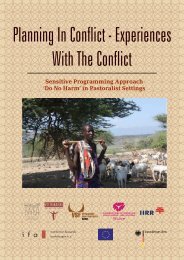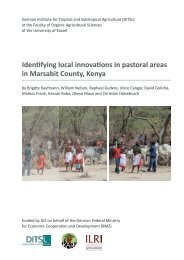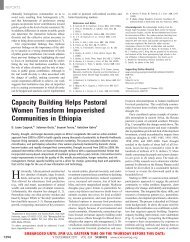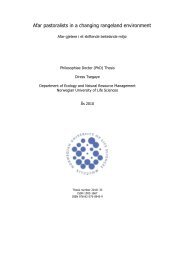Drought Contingency Planning with Pastoral Communities - celep
Drought Contingency Planning with Pastoral Communities - celep
Drought Contingency Planning with Pastoral Communities - celep
You also want an ePaper? Increase the reach of your titles
YUMPU automatically turns print PDFs into web optimized ePapers that Google loves.
Table 2: A hazard assessment form sample<br />
Hazard Assessment form<br />
Hazard:_____________________________<br />
Characteristics Elements Analytical<br />
Description of<br />
Hazard<br />
Cause/Origin<br />
Force<br />
Warning signs & signals<br />
Forewarning<br />
Speed of onset<br />
Frequency<br />
Period of occurrence<br />
Duration<br />
Exposure Variables<br />
How will it affect me<br />
How will it affect my community<br />
2.5.2 Vulnerability Assessment<br />
Vulnerability Assessment helps to identify what is exposed in both human and non beings,<br />
because of their location and time vis-à-vis hazard onset. There are two ways of defining<br />
vulnerability:<br />
• Vulnerability is defined as a set of prevailing or consequential conditions, which<br />
adversely affect the community’s ability to prevent, mitigate, prepare for or respond to<br />
hazard events (Anderson and Woodrow, 1989)<br />
• It is the degree to which an area, people, physical structures or economic assets are<br />
exposed to loss, injury or damage caused by the impact of a hazard [Disaster Management:<br />
A Disaster Manager’s Handbook, Chapter 2 and Appendix A. Disaster Mitigation in Asia<br />
and the Pacific, pp. 30-40]. This definition asserts vulnerability as equivalent to location<br />
and can be represented in this mathematical formula: vulnerability = the location of<br />
element at risk vis-a-vis the hazard (considering other factors like slopes).<br />
Degree of Vulnerability = Location of element at risks : Distance + Time<br />
The location of the element at risk (whether well or poorly built) determines the degree of<br />
exposures to hazard or the degree of vulnerability. This shows that whether rich or poor, all<br />
persons living in the same location have equal degrees of vulnerability to the impact of the<br />
hazard. Under this assumption, the socio-economic status has no bearing on the degree of<br />
vulnerability. Thus, vulnerability refers mainly to the location of element at risk and this<br />
becomes the main determinant in the degree of exposure to the hazard’s impact.<br />
13


